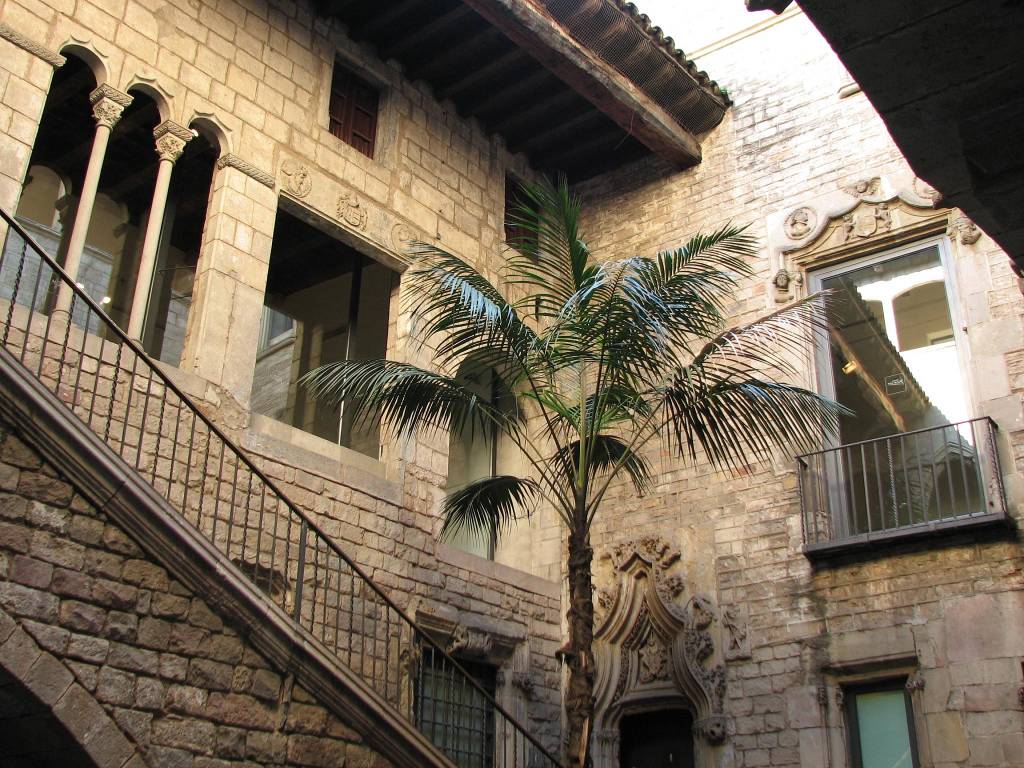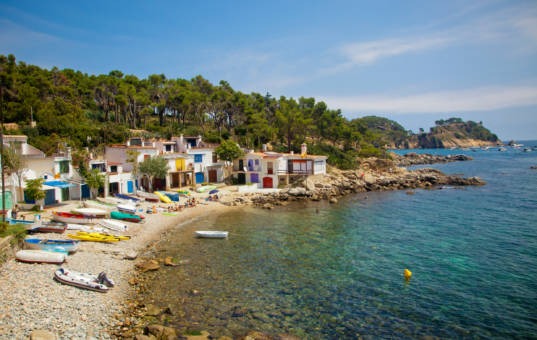Barcelona is synonymous with diversity. One of its most authentic and curious neighbourhoods is El Born: an area full of culture and leisure that hides surprising and unique places. One of these places is the Picasso Museum, a jewel in El Born.
Located on carrer Montcada, one of the main streets of medieval Barcelona, the museum dedicated to Pablo Picasso occupies five large palaces dating from the 13th and 14th centuries. The Berenguer de Aguilar Palace, the Baró de Castellet Palace, the Meca Palace, the Mauri Palace and the Finestres Palace, all fine examples of medieval Gothic architecture, share a common structure, consisting of a central courtyard and an uncovered exterior staircase leading to the main floor.

A renowned museum in Barcelona
Opened in 1963, the Picasso Museum is one of the most important museums in Barcelona. Pablo Picasso was born in Malaga in 1881 but moved to Barcelona fourteen years later. He lived in the city for 9 years, a period in which he created a close and inseparable bond with the city. Picasso used to move around the old town, where he soon became part of the artistic circle of the Quatre Gats and made friends that he maintained until his old age.
To visit the Picasso Museum is to experience another era; it is like to live in first person the purest essence of his artistic career. Pablo Picasso, the inventor of cubism and one of the most outstanding artists of the 20th century, left us jewels such as paintings, sculptures, engravings, ceramics and even poetry. Examples of all of them are hidden among the five palaces that make up the museum.
Picasso Museum’s Palaces
The Picasso Museum was originally located in the Aguilar Palace (Montcada, 15), and over the years it expanded to the surrounding palaces. The original mansion dates from the 13th century and was remodelled between the 15th and 18th centuries. It has a central courtyard from the 15th century with an open staircase, a gallery of pointed arches and samples of Flamboyant Gothic sculpture.
The second palace that became part of the museum was the Baró de Castellet Palace (Montcada, 17). Inside, on the main floor, there is a magnificent neoclassical hall.
The Meca Palace (Montcada, 19) is attached to the Aguilar and Baró de Castellet Palaces and was part of the last major extension, to which the Casa Mauri (Montcada, 21) and the Finestres Palace (Montcada, 23) were added. In the 13th century, the Casa Mauri was part of the premises of the neighbouring building, and it was not until 1999 that the house became part of the Picasso Museum. The Finestres Palace, annexed in 1970, is the area that houses the museum’s temporary exhibitions.
The works by Pablo Picasso
From among the more than 4,000 works in the museum, there are 39 must-see paintings in the permanent collection. One of the museum’s most outstanding works is the famous “Las Meninas Series”, through which Picasso analyses, reinterprets and recreates the namesake work by Diego Velázquez. Another of the museum’s best-known works is “Painter at Work”, in which the artist becomes the centre of the painting. In the Picasso Museum you can also admire works such as “Man in a Beret”, “Mountain Landscape” and “Portrait of Aunt Pepa”.
The museum also offers temporary exhibitions. All of them related to Picasso’s life: from the exhibition of his notebooks to exhibitions about his personal life. The exhibition ”Picasso and the artist’s jewels”, for example, showed his less known artistic jewellery productions.

The Picasso Museum in Barcelona sells more than a million tickets every year, what makes it one of the most important museums in Barcelona.



